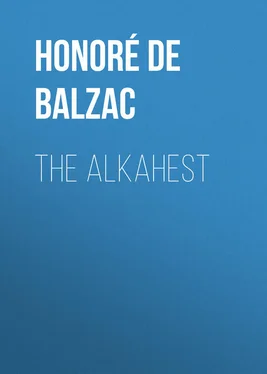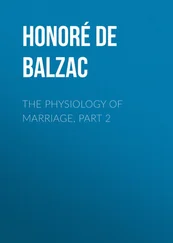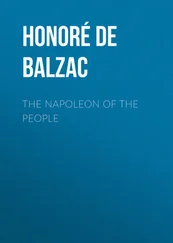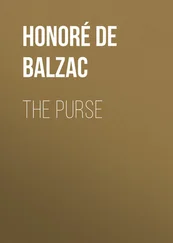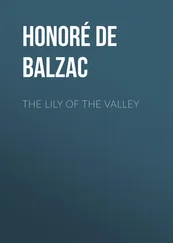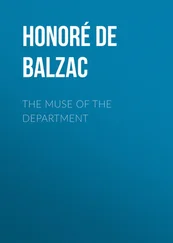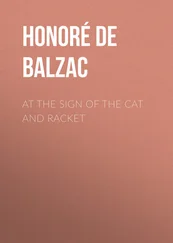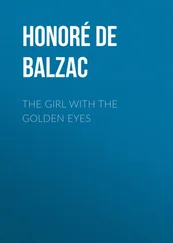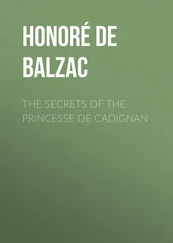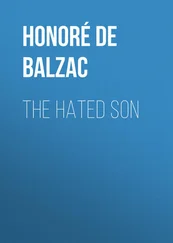Honoré Balzac - The Alkahest
Здесь есть возможность читать онлайн «Honoré Balzac - The Alkahest» — ознакомительный отрывок электронной книги совершенно бесплатно, а после прочтения отрывка купить полную версию. В некоторых случаях можно слушать аудио, скачать через торрент в формате fb2 и присутствует краткое содержание. Жанр: literature_19, foreign_antique, foreign_prose, на английском языке. Описание произведения, (предисловие) а так же отзывы посетителей доступны на портале библиотеки ЛибКат.
- Название:The Alkahest
- Автор:
- Жанр:
- Год:неизвестен
- ISBN:нет данных
- Рейтинг книги:4 / 5. Голосов: 1
-
Избранное:Добавить в избранное
- Отзывы:
-
Ваша оценка:
- 80
- 1
- 2
- 3
- 4
- 5
The Alkahest: краткое содержание, описание и аннотация
Предлагаем к чтению аннотацию, описание, краткое содержание или предисловие (зависит от того, что написал сам автор книги «The Alkahest»). Если вы не нашли необходимую информацию о книге — напишите в комментариях, мы постараемся отыскать её.
The Alkahest — читать онлайн ознакомительный отрывок
Ниже представлен текст книги, разбитый по страницам. Система сохранения места последней прочитанной страницы, позволяет с удобством читать онлайн бесплатно книгу «The Alkahest», без необходимости каждый раз заново искать на чём Вы остановились. Поставьте закладку, и сможете в любой момент перейти на страницу, на которой закончили чтение.
Интервал:
Закладка:
From the time the house was built, this facade had been carefully cleaned twice a year. If a little mortar fell from between the bricks, the crack was instantly filled up. The sashes, the sills, the copings, were dusted oftener than the most precious sculptures in the Louvre. The front of the house bore no signs of decay; notwithstanding the deepened color which age had given to the bricks, it was as well preserved as a choice old picture, or some rare book cherished by an amateur, which would be ever new were it not for the blistering of our climate and the effect of gases, whose pernicious breath threatens our own health.
The cloudy skies and humid atmosphere of Flanders, and the shadows produced by the narrowness of the street, sometimes diminished the brilliancy which the old house derived from its cleanliness; moreover, the very care bestowed upon it made it rather sad and chilling to the eye. A poet might have wished some leafage about the shrine, a little moss in the crevices of the freestone, a break in the even courses of the brick; he would have longed for a swallow to build her nest in the red coping that roofed the arches of the windows. The precise and immaculate air of this facade, a little worn by perpetual rubbing, gave the house a tone of severe propriety and estimable decency which would have driven a romanticist out of the neighborhood, had he happened to take lodgings over the way.
When a visitor had pulled the braided iron wire bell-cord which hung from the top of the pilaster of the doorway, and the servant-woman, coming from within, had admitted him through the side of the double-door in which was a small grated loop-hole, that half of the door escaped from her hand and swung back by its own weight with a solemn, ponderous sound that echoed along the roof of a wide paved archway and through the depths of the house, as though the door had been of iron. This archway, painted to resemble marble, always clean and daily sprinkled with fresh sand, led into a large court-yard paved with smooth square stones of a greenish color. On the left were the linen-rooms, kitchens, and servants’ hall; to the right, the wood-house, coal-house, and offices, whose doors, walls, and windows were decorated with designs kept exquisitely clean. The daylight, threading its way between four red walls chequered with white lines, caught rosy tints and reflections which gave a mysterious grace and fantastic appearance to faces, and even to trifling details.
A second house, exactly like the building on the street, and called in Flanders the “back-quarter,” stood at the farther end of the court-yard, and was used exclusively as the family dwelling. The first room on the ground-floor was a parlor, lighted by two windows on the court-yard, and two more looking out upon a garden which was of the same size as the house. Two glass doors, placed exactly opposite to each other, led at one end of the room to the garden, at the other to the court-yard, and were in line with the archway and the street door; so that a visitor entering the latter could see through to the greenery which draped the lower end of the garden. The front building, which was reserved for receptions and the lodging-rooms of guests, held many objects of art and accumulated wealth, but none of them equalled in the eyes of a Claes, nor indeed in the judgment of a connoisseur, the treasures contained in the parlor, where for over two centuries the family life had glided on.
The Claes who died for the liberties of Ghent, and who might in these days be thought a mere ordinary craftsman if the historian omitted to say that he possessed over forty thousand silver marks, obtained by the manufacture of sail-cloth for the all-powerful Venetian navy, – this Claes had a friend in the famous sculptor in wood, Van Huysum of Bruges. The artist had dipped many a time into the purse of the rich craftsman. Some time before the rebellion of the men of Ghent, Van Huysum, grown rich himself, had secretly carved for his friend a wall-decoration in ebony, representing the chief scenes in the life of Van Artevelde, – that brewer of Ghent who, for a brief hour, was King of Flanders. This wall-covering, of which there were no less than sixty panels, contained about fourteen hundred principal figures, and was held to be Van Huysum’s masterpiece. The officer appointed to guard the burghers whom Charles V. determined to hang when he re-entered his native town, proposed, it is said, to Van Claes to let him escape if he would give him Van Huysum’s great work; but the weaver had already despatched it to Douai.
The parlor, whose walls were entirely panelled with this carving, which Van Huysum, out of regard for the martyr’s memory, came to Douai to frame in wood painted in lapis-lazuli with threads of gold, is therefore the most complete work of this master, whose least carvings now sell for nearly their weight in gold. Hanging over the fire-place, Van Claes the martyr, painted by Titian in his robes as president of the Court of Parchons, still seemed the head of the family, who venerated him as their greatest man. The chimney-piece, originally in stone with a very high mantle-shelf, had been made over in marble during the last century; on it now stood an old clock and two candlesticks with five twisted branches, in bad taste, but of solid silver. The four windows were draped by wide curtains of red damask with a flowered black design, lined with white silk; the furniture, covered with the same material, had been renovated in the time of Louis XIV. The floor, evidently modern, was laid in large squares of white wood bordered with strips of oak. The ceiling, formed of many oval panels, in each of which Van Huysum had carved a grotesque mask, had been respected and allowed to keep the brown tones of the native Dutch oak.
In the four corners of this parlor were truncated columns, supporting candelabra exactly like those on the mantle-shelf; and a round table stood in the middle of the room. Along the walls card-tables were symmetrically placed. On two gilded consoles with marble slabs there stood, at the period when this history begins, two glass globes filled with water, in which, above a bed of sand and shells, red and gold and silver fish were swimming about. The room was both brilliant and sombre. The ceiling necessarily absorbed the light and reflected none. Although on the garden side all was bright and glowing, and the sunshine danced upon the ebony carvings, the windows on the court-yard admitted so little light that the gold threads in the lapis-lazuli scarcely glittered on the opposite wall. This parlor, which could be gorgeous on a fine day, was usually, under the Flemish skies, filled with soft shadows and melancholy russet tones, like those shed by the sun on the tree-tops of the forests in autumn.
It is unnecessary to continue this description of the House of Claes, in other parts of which many scenes of this history will occur: at present, it is enough to make known its general arrangement.
CHAPTER II
Towards the end of August, 1812, on a Sunday evening after vespers, a woman was sitting in a deep armchair placed before one of the windows looking out upon the garden. The sun’s rays fell obliquely upon the house and athwart the parlor, breaking into fantastic lights on the carved panellings of the wall, and wrapping the woman in a crimson halo projected through the damask curtains which draped the window. Even an ordinary painter, had he sketched this woman at this particular moment, would assuredly have produced a striking picture of a head that was full of pain and melancholy. The attitude of the body, and that of the feet stretched out before her, showed the prostration of one who loses consciousness of physical being in the concentration of powers absorbed in a fixed idea: she was following its gleams in the far future, just as sometimes on the shores of the sea, we gaze at a ray of sunlight which pierces the clouds and draws a luminous line to the horizon.
Читать дальшеИнтервал:
Закладка:
Похожие книги на «The Alkahest»
Представляем Вашему вниманию похожие книги на «The Alkahest» списком для выбора. Мы отобрали схожую по названию и смыслу литературу в надежде предоставить читателям больше вариантов отыскать новые, интересные, ещё непрочитанные произведения.
Обсуждение, отзывы о книге «The Alkahest» и просто собственные мнения читателей. Оставьте ваши комментарии, напишите, что Вы думаете о произведении, его смысле или главных героях. Укажите что конкретно понравилось, а что нет, и почему Вы так считаете.
